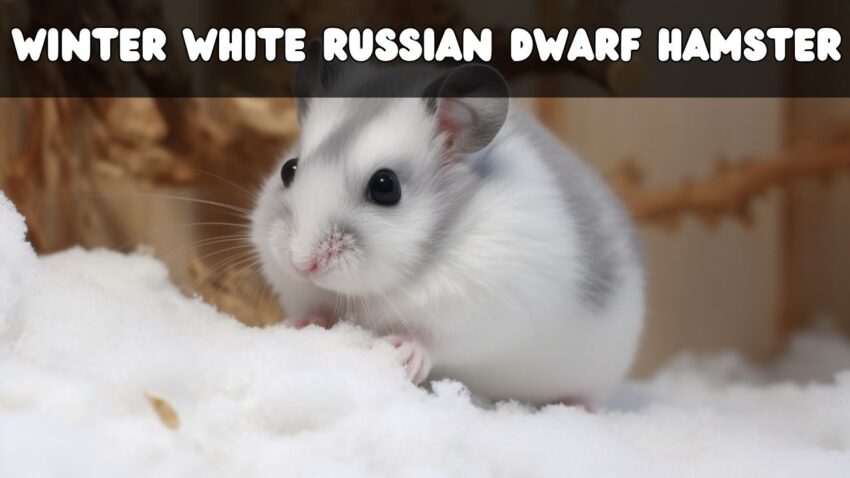Amid the diverse world of hamsters, there emerges a species that captures hearts with its unique charm and endearing characteristics. The Winter White Russian Dwarf Hamster is not just another rodent; it’s a bundle of enchantment packed into a small, agile body. Delicate in appearance yet resilient in nature, this species holds a treasure trove of wonders waiting to be discovered.
Introduction to the Captivating World of the Winter White Russian Dwarf Hamster
Traversing the vast landscapes of Siberia, one might stumble upon a spectacle of these hamsters, beautifully blending in with the snowy terrain. It is this remarkable ability to adapt and its exquisite white winter coat that lends it its name. But the Winter White is not just about its winter marvel; it undergoes a transformation with the seasons, showcasing a versatility that’s rare in the rodent world. This duality in appearance is just the tip of the iceberg. Dive deeper, and you uncover a realm of behaviors, habits, and traits that make the Winter White a favorite among both novice and seasoned hamster enthusiasts.
A Glimpse of What the Article Entails
As we journey through this guide, we’ll explore the nooks and crannies of the Winter White’s world. From the chilly stretches of its natural habitat to the cozy confines of a lovingly crafted cage, we’ll touch upon every aspect of its life. The article aims not just to inform but also to equip potential owners with the knowledge to offer the best care to these petite pets.
Moreover, our understanding of the Winter White Russian Dwarf Hamster doesn’t stop at mere admiration. We delve into the intricacies of its health, dietary needs, and even the ethical considerations when it comes to breeding. After all, as stewards of these lovely creatures, it’s our responsibility to ensure their well-being at every stage of their lives.
Overview
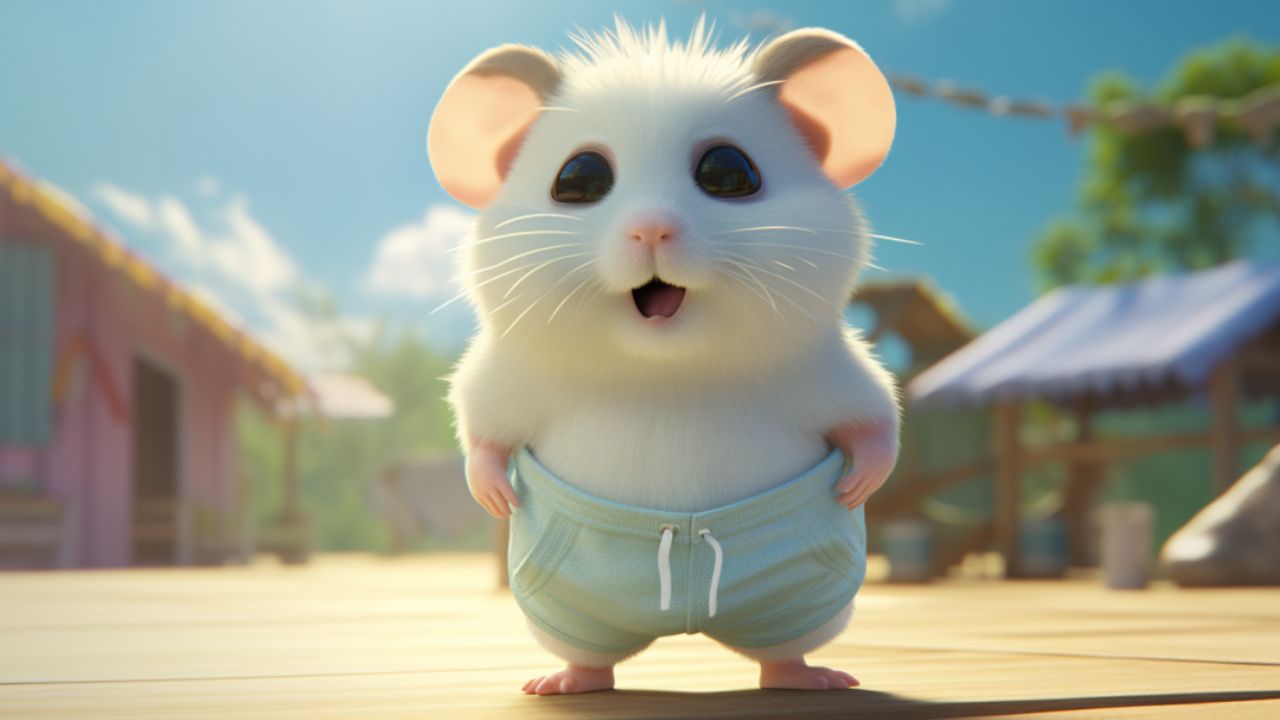
The animal kingdom is vast and varied, with each species carrying its own set of mysteries and wonders. Among these, the Winter White Russian Dwarf Hamster stands out, not just for its petite size and captivating appearance but also for the unique behaviors and traits it exhibits. As we delve into this overview, we’ll uncover the intricacies of this species, painting a holistic picture of its existence in both the wild terrains and cozy household corners.
Intricacies and General Information about the Winter White Russian Dwarf Hamster
The Winter White Russian Dwarf Hamster, scientifically known as Phodopus sungorus, is a small rodent native to parts of Siberia, Kazakhstan, and Mongolia. What’s particularly enchanting about them is their adaptive ability to change fur colors with the seasons. While they don a thick, snowy-white coat in the winter months, they transition to a greyish-brown hue during the summer, providing them camouflage against potential predators in both settings.
Their lifespan, when in captivity, generally ranges between 1.5 to 2 years, but with proper care, some individuals have been known to live a tad longer. Active mainly during the evening and night, these nocturnal wonders have evolved to have a keen sense of hearing and smell, aiding them in both foraging for food and evading threats in the wild.
Common Places Where They Are Found, Both as Wild Creatures and Cherished Pets
In the wild, the Winter White Russian Dwarf Hamster primarily inhabits the steppes and semi-arid areas of Siberia and nearby regions. They burrow intricate tunnel systems to stay shielded from the harsh climatic conditions, especially during the bone-chilling winters.
However, their charming demeanor and manageable size have also made them popular pets worldwide. It’s not uncommon to find these hamsters in pet stores or with breeders, where they are celebrated for their gentle temperament and relatively easy care requirements. Their adaptability to domestic life, coupled with their endearing behaviors, has ensured that they find a place in the hearts and homes of many across the globe.
Natural Habitat

From the vast expanse of nature’s canvas emerges the story of the Winter White Russian Dwarf Hamster’s habitat. The interplay of nature’s elements, combined with the evolutionary traits of this species, carves out a remarkable narrative of survival, adaptation, and resilience. As we navigate through this section, we’ll voyage into the heart of their native territories, shedding light on the environments that cradle their existence and influence their unique behaviors.
An Exploration of the Winter White Russian Dwarf Hamster’s Native Habitat
Originating from the sprawling steppes and semi-desert regions of Siberia, Kazakhstan, and Mongolia, the Winter White Russian Dwarf Hamster has carved a niche for itself in these vast landscapes. The terrains here are characterized by open spaces, interspersed with shrubs and patches of grasses. Within these landscapes, the hamsters have mastered the art of burrowing, creating extensive tunnel systems that serve multiple purposes. These burrows, often complex and layered, provide shelter from the extreme weather conditions, serve as storage for food, and offer protection from predators.
These hamsters are also equipped with the unique ability to undergo a seasonal change in fur color, a testament to their adaptation to the snowy winters and warmer summers of their habitat. This color shift, from a warm gray-brown to a pristine white, acts as a camouflage, helping them blend seamlessly with the changing landscapes, be it the snow-covered grounds of winter or the earthy terrains of summer.
Insight into the Climatic and Geographical Conditions Favoring Their Existence
The climatic conditions of the Winter White Russian Dwarf Hamster’s natural habitat can be quite extreme. Winters are notably harsh, with temperatures plummeting well below freezing, often accompanied by heavy snowfall. In contrast, summers, though short, bring warmth, with temperatures rising considerably, making the landscape more hospitable for the growth of vegetation.
Geographically, the steppes and semi-deserts they inhabit are expansive flatlands, punctuated occasionally by shrubs, grasses, and sparse trees. The soil composition, primarily loamy and sandy, facilitates their burrowing habits. Water sources, though not abundant, are scattered across these regions in the form of small streams and ponds, providing the necessary hydration for both the hamsters and the vegetation they feed on.
The convergence of these climatic and geographical factors has not only influenced the Winter White Russian Dwarf Hamster’s physical attributes and behaviors but has also played a pivotal role in shaping its life cycle, diet, and reproductive habits.
Physical Characteristics
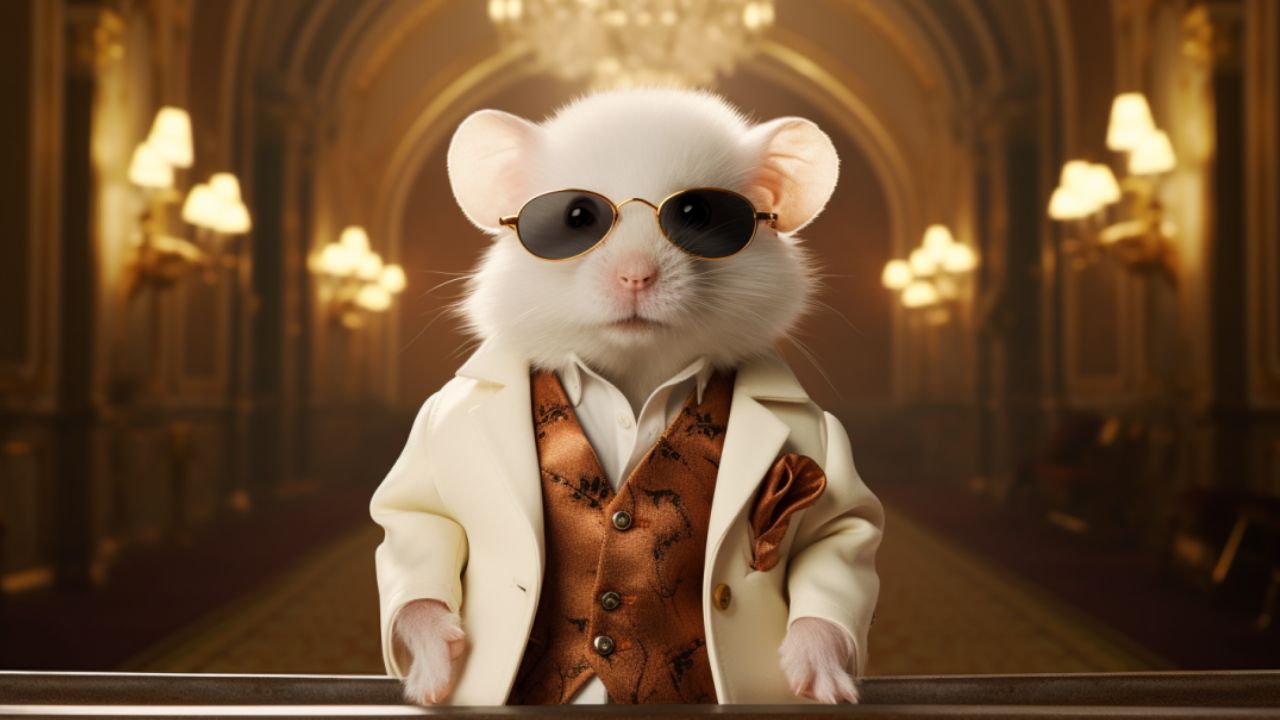
The Winter White Russian Dwarf Hamster is a symphony of nature’s design, with its features harmoniously tailored to its environment. This species stands out not just because of its compact size but also because of its enthralling color patterns and distinguishing characteristics. As we delve into the descriptive realm of its physical attributes, one can’t help but appreciate the minute details and evolutionary marvels that set this hamster species apart. Alongside our descriptive journey, high-quality images intersperse the text, providing readers with a vivid and insightful visual experience.
Detailed Descriptions of the Hamster’s Physical Attributes
Size: The Winter White Russian Dwarf Hamster is, as its name suggests, a dwarf hamster. Adults usually measure between 3 to 4 inches in length, making them one of the smaller hamster species. Their compact size, combined with a stout build, makes them adept at navigating the burrows and tunnels of their natural habitat.
Color Patterns: One of the most fascinating attributes of this hamster is its ability to change color with the seasons. During the warmer months, their fur is predominantly a grayish-brown, with a dark dorsal stripe running along the spine. This stripe is more pronounced and serves as a distinguishing characteristic of the species. However, as winter approaches and daylight decreases, a captivating transformation begins. Their fur turns almost completely white, mimicking the snowy landscapes of their habitat. This not only serves as camouflage against predators but is also a testament to their incredible adaptability.
Distinctive Features: Beyond their color-changing abilities, the Winter White Russian Dwarf Hamster possesses several distinctive features. Their eyes, deep-set and sparkling, exude curiosity and alertness. Their rounded ears, which sit atop their heads, are always perked up, catching even the faintest of sounds. Whiskers, sensitive and twitchy, act as sensory tools, especially when navigating in the dark or feeling out their surroundings. Their short tails, often overlooked, provide balance, especially when they engage in rapid movements or turns.
Evolutionary Adaptations: A Journey Through Time
While the Winter White Russian Dwarf Hamster captivates with its current appearance, it’s essential to understand how evolutionary pressures have shaped its form and function. From the unique color-changing coat to the compact size, each feature serves a purpose, a testament to nature’s craftsmanship.
Seasonal Camouflage: As mentioned, the most mesmerizing feature is their ability to change color. This isn’t just for show. This evolutionary adaptation helps them blend into their surroundings, providing them an edge against predators. During the summer, the grayish-brown hue mimics the barren grounds and during winter, the white coat becomes a cloak of invisibility amidst the snow.
Compact Size for Underground Living: Their small stature isn’t just about being adorable. In the wild, these hamsters predominantly live in burrows, which they dig themselves. A compact body allows them to navigate tight spaces with ease, protecting them from larger predators and extreme weather conditions.
Sensitive Whiskers for Night-Time Exploration: Given their nocturnal nature, Winter White Russian Dwarf Hamsters often venture out in the dark. Their whiskers, long and sensitive, act as radar systems, detecting obstacles and helping them map out their surroundings.
Through these evolutionary lenses, it becomes evident that every physical attribute of the Winter White Russian Dwarf Hamster is a culmination of centuries of adaptation and survival. It’s a tale of nature’s ingenuity, where form beautifully meets function.
Behavior and Temperament
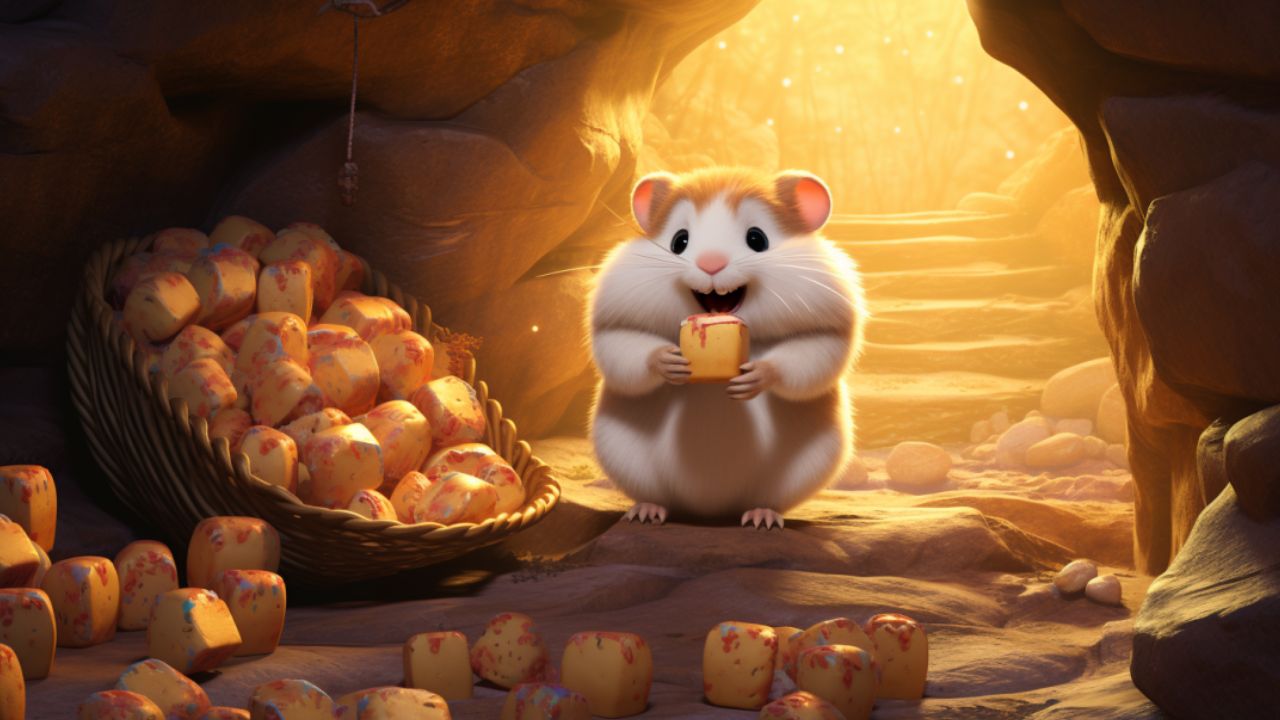
The Winter White Russian Dwarf Hamster is not just a delight to the eyes, but its behavior and temperament also make it one of the most sought-after pets for hamster enthusiasts. This tiny bundle of energy brings with it a unique blend of character traits that can both amuse and challenge a pet owner.
A Study into the Typical Behavior of the Winter White Russian Dwarf Hamster
Often active during the dusk and dawn, the Winter White Russian Dwarf Hamster showcases crepuscular behavior. This means they’re most active during the twilight hours, a trait likely evolved to avoid daytime predators. During these hours, they can be seen busily foraging for food, grooming themselves, or playing around.
Their social nature is another interesting aspect. Unlike some other hamster species, the Winter Whites often thrive better when they have companionship, especially if they’re introduced to each other at a young age. They’re known to form tight-knit bonds with their cage mates, often huddling together for warmth and comfort.
However, it’s important to note that, like any other creature, individual temperament can vary. While some may be exceptionally sociable, others might prefer a life of solitude. Observing and respecting their individual personalities is crucial for a harmonious coexistence.
Spotlight on Unique Behavioral Traits or Quirks
One of the most endearing quirks of the Winter White Russian Dwarf Hamster is their penchant for hoarding. They have spacious cheek pouches, which they stuff with food to carry back to their nests. It’s a sight to behold when their tiny faces bulge with all the treasure they’ve collected!
Another fascinating trait is their swift agility. When they’re not busy hoarding or grooming, they can often be seen running on wheels or through tunnels at impressive speeds, showcasing their nimbleness.
Additionally, their seasonal coat change, which has already been mentioned in the context of their physical characteristics, also has behavioral implications. As the days get shorter and colder, signaling the approach of winter, these hamsters start preparing. Their coat begins its transformation, and they might even become a bit more lethargic, mirroring the natural behavior of conserving energy during winter months in the wild.
In conclusion, the behavior and temperament of the Winter White Russian Dwarf Hamster offer a window into their captivating world. They’re not just pets; they’re tiny beings with distinct personalities, quirks, and a whole lot of charm.
Diet and Nutrition
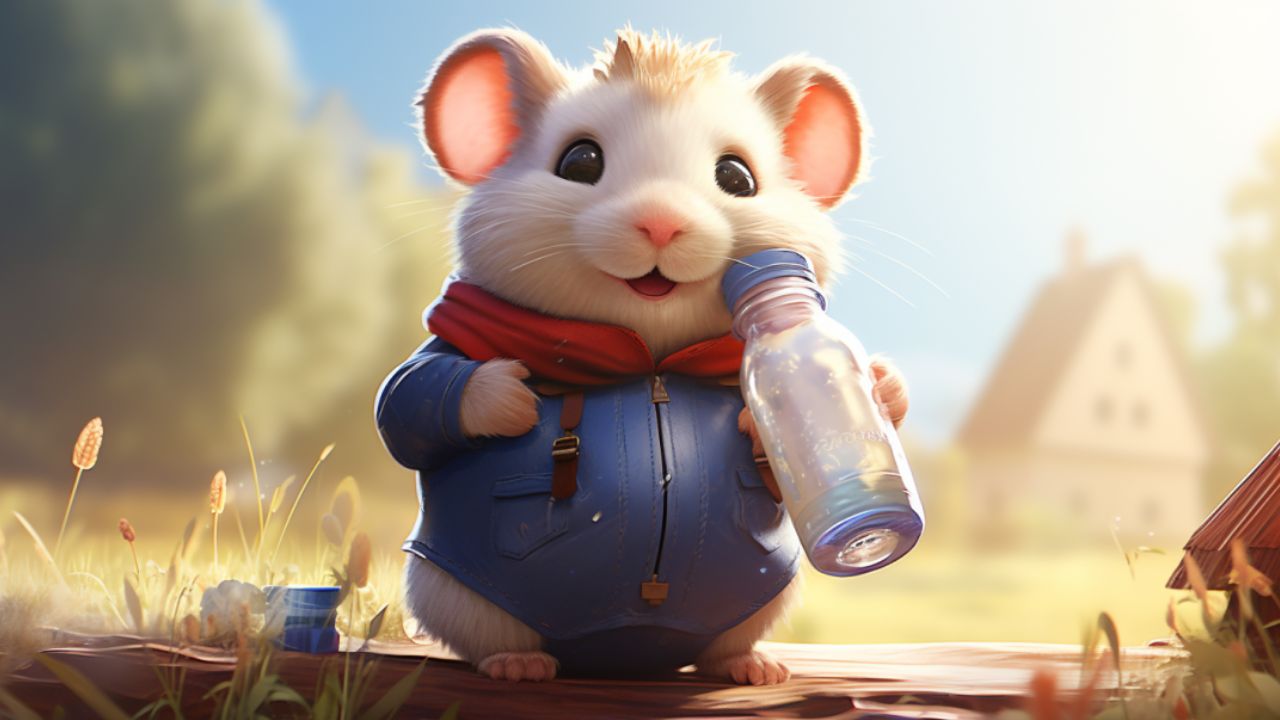
The Winter White Russian Dwarf Hamster is a captivating species, and its diet plays an integral role in ensuring its health, vibrancy, and well-being. These hamsters are known for their active lifestyles, and providing them with the right nutritional balance is imperative for their energy levels and overall vitality. Their dietary requirements might appear simple at first glance, but understanding the nuances can make a significant difference in their quality of life.
A Culinary Journey into What the Winter White Russian Dwarf Hamster Typically Relishes
The primary diet of a Winter White Russian Dwarf Hamster in the wild consists of various seeds, grains, and plants. When in captivity:
- Seeds and Grains: A balanced mix of sunflower seeds, millet, wheat, barley, and oats serves as the mainstay of their diet. These grains offer the necessary carbs, proteins, and fats to keep them energetic and healthy.
- Fresh Produce: Introducing fresh fruits and vegetables adds essential vitamins and minerals to their diet. Favorites include cucumber slices, broccoli florets, carrots, and apple slices (without seeds). However, it’s essential to avoid citrus fruits as they can be too acidic.
- Protein Boost: In the wild, these hamsters occasionally consume insects. In captivity, offering them mealworms, crickets, and the occasional boiled egg provides them with a protein boost.
An Exploration of Any Specific Dietary Requirements or Preferences They Might Have
- Water: Continuous access to fresh water is vital. A sipper bottle is ideal as it prevents contamination.
- Calcium and Minerals: A calcium block or mineral stone can be a beneficial addition to their cage. They gnaw on these, which not only strengthens their teeth but also provides essential minerals.
- Treats and Moderation: While they do have a penchant for treats, it’s crucial to offer them sparingly. Overindulgence, especially in sugary or fatty foods, can lead to obesity and other health complications.
- Avoid Harmful Foods: Foods such as onions, garlic, almonds, chocolate, and any caffeinated or sugary treats should be strictly avoided. They can be toxic or harmful in larger quantities.
- Supplementation: If you notice your hamster’s coat looking a bit dull or if they appear less energetic, consult a vet. They might recommend specific supplements to reintroduce that vigor and shine.
Regularly monitoring their weight, energy levels, and overall demeanor can give you insights into their health. If you observe any sudden changes in their eating habits or general behavior, it’s wise to consult a veterinarian or a hamster care expert.
Housing and Environment
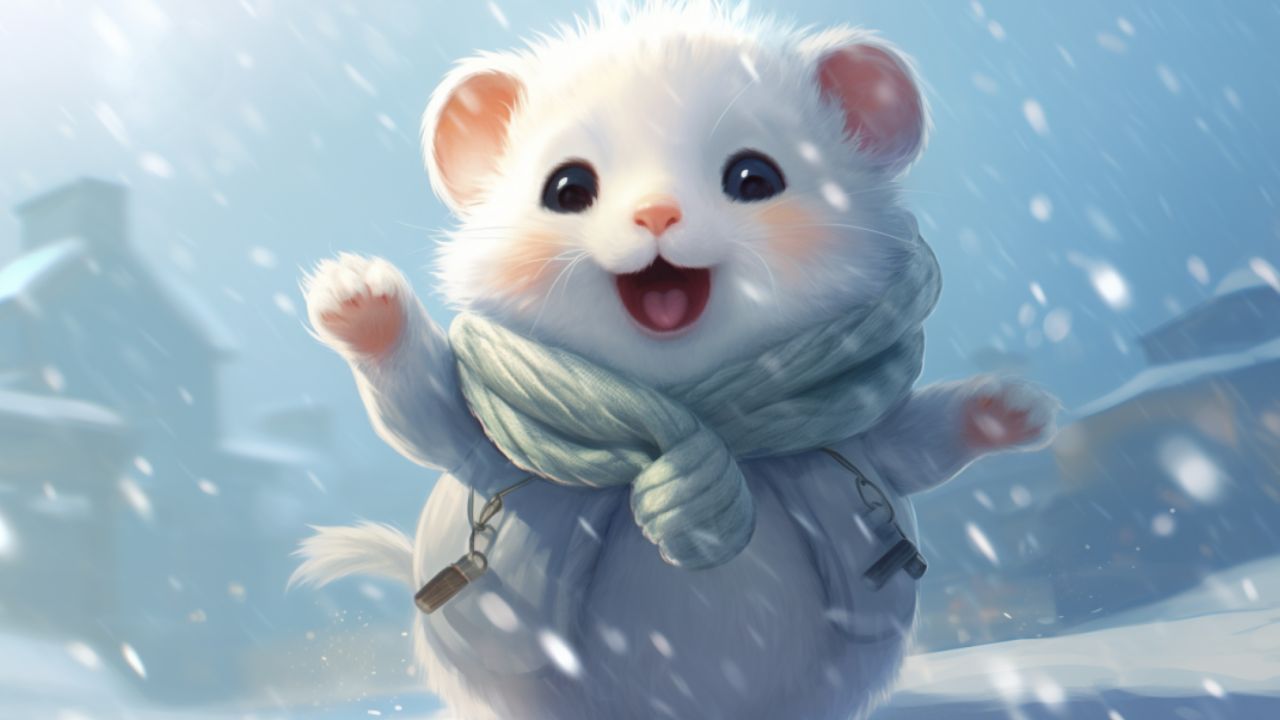
Creating a comfortable and safe environment for the Winter White Russian Dwarf Hamster is crucial for its overall well-being. These active creatures require a habitat that resonates with their natural tendencies while offering them ample space to play, forage, and rest. Let’s explore the ins and outs of setting up a Winter White Russian Dwarf Hamster’s haven.
Guidelines for Creating the Perfect Living Space for the Winter White Russian Dwarf Hamster
- Space and Comfort: Remember, bigger is always better when it comes to hamster cages. While these are “dwarf” hamsters, they’re highly active and appreciate space to roam. A cage with a minimum of 2 square feet of floor space is recommended, but if you can provide more, your hamster will certainly enjoy it.
- Ventilation: Opt for cages with wire mesh sides, which provide optimal ventilation. Ensure that the gaps between the wires are narrow enough to prevent escape attempts. If choosing a glass or plastic habitat, make sure there are ample air holes.
- Multiple Levels: Consider a multi-level cage to offer climbing opportunities, replicating their natural environment’s ups and downs. Make sure the levels are safely accessible, with ladders or tubes.
- Hideaways: Hamsters, being prey animals, appreciate hideouts where they can escape and rest. Offer multiple hiding spots, such as wooden houses, tunnels, or even cardboard boxes.
- Toys and Enrichment: Equip their cage with toys such as exercise wheels, tunnels, bridges, and chew toys. This ensures mental stimulation and helps in physical fitness.
Recommendations on Cage Dimensions, Bedding Materials, and Other Crucial Environmental Conditions
- Cage Dimensions: As previously mentioned, aim for a minimum of 2 square feet of floor space. However, a cage that’s 3-4 square feet would be ideal.
- Bedding: Paper-based or aspen bedding is popular and safe for hamsters. Ensure it’s unscented and free from chemicals or dyes. Bedding should be several inches thick to allow burrowing.
- Cleaning: Clean the cage thoroughly at least once a week. Spot-clean daily to remove any wet or soiled bedding.
- Location: Place the cage in a quiet, low-traffic area of your home, away from direct sunlight or drafts. Hamsters have sensitive ears, so a serene environment is ideal.
- Temperature: The Winter White Russian Dwarf Hamster prefers temperatures between 65°F to 75°F (18°C to 24°C). Avoid placing the cage near heaters, air conditioners, or windows.
- Accessories: Water bottles with metal spouts are preferred over dishes to ensure clean water. Provide a shallow dish for food, and consider adding a sand bath as they enjoy rolling in sand to clean their fur.
- Safety: Ensure the cage has a secure lid to prevent any adventurous escape attempts. Also, keep the cage away from other pets like cats or dogs, which might stress or harm the hamster.
Creating a comfortable habitat requires attention to detail but pays off in the form of a happy, healthy Winter White Russian Dwarf Hamster. Investing time and effort in setting up the right environment is a testament to responsible pet ownership.
Health and Wellness
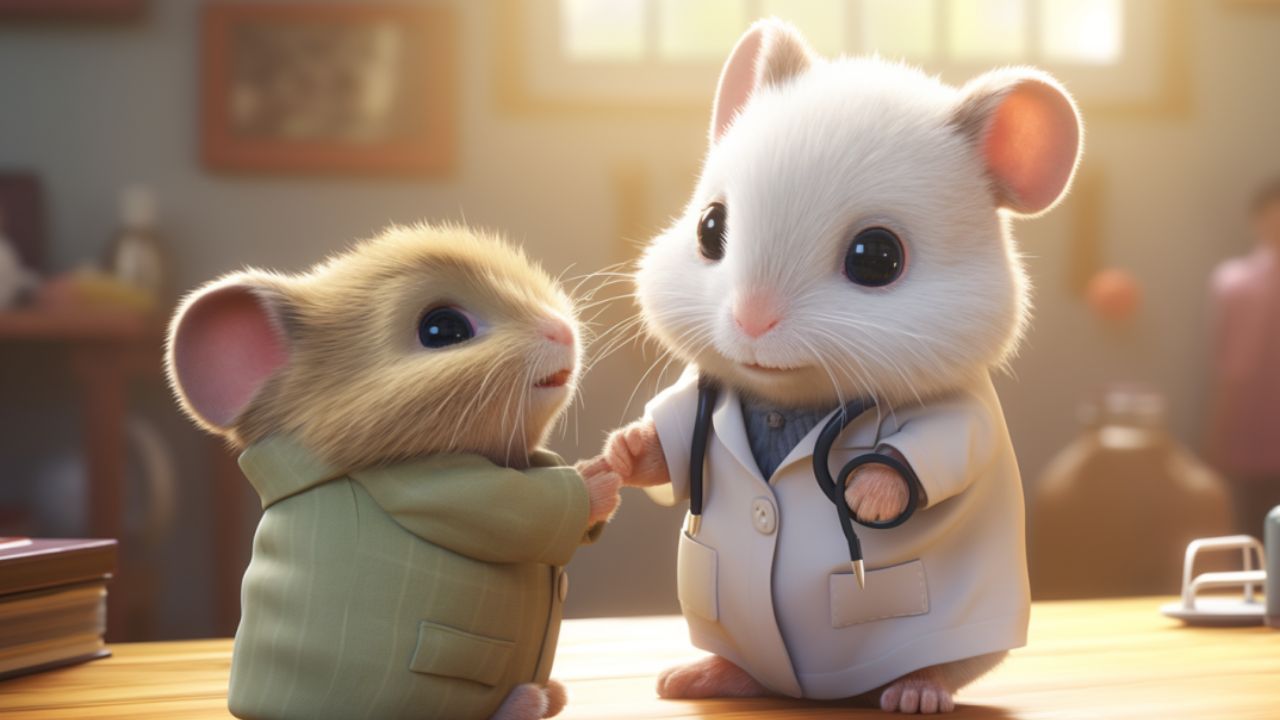
Winter White Russian Dwarf Hamsters, like all pets, have unique health needs that, when addressed proactively, can ensure they live a happy and extended life. Keeping an eye on their health and well-being is essential to catching potential problems early and providing the best possible care. Dive into the most common health challenges faced by these hamsters and understand when it’s time to consult a veterinary expert.
A Guide on the Most Common Health Challenges the Winter White Russian Dwarf Hamster May Face and How to Avert Them
- Wet Tail: This is a severe diarrheal disease often seen in hamsters, characterized by wetness around the tail area. It can be caused by stress, bacterial infections, or inappropriate diet. Preventing it involves keeping their environment clean, minimizing stressors, and ensuring a balanced diet. Immediate veterinary attention is essential if you suspect wet tail.
- Respiratory Infections: Symptoms include sneezing, wheezing, and nasal discharge. To prevent respiratory issues, avoid drafts, sudden temperature changes, and damp environments. A clean cage is also crucial.
- Tumors: Like many rodents, hamsters can develop tumors, especially as they age. Regularly checking your hamster during play and handling can help you notice any unusual lumps or bumps. Early detection and veterinary consultation can make a difference.
- Dental Problems: Hamsters’ teeth continuously grow. If they don’t wear down naturally, it can lead to dental issues. Providing chew toys and hard treats can help keep teeth at an appropriate length. Regularly checking their mouth can also be beneficial.
- Skin Issues: Parasites, allergies, or infections can lead to hair loss, redness, or scabs. Ensure the cage is clean, and the bedding is parasite-free. If skin problems persist, a vet visit is necessary.
- Dietary Issues: Incorrect diets can lead to problems like obesity or diabetes, especially in dwarf hamsters. Feed a balanced hamster diet and limit sugary treats.
Information on When It’s Crucial to Seek Veterinary Expertise
- Behavioral Changes: If your hamster suddenly becomes less active, aggressive, or shows signs of distress, it might be indicative of an underlying health issue.
- Physical Changes: Unexplained weight loss or gain, changes in feces, or visible tumors should prompt an immediate vet visit.
- Dietary Changes: If your hamster stops eating or drinking, it’s a serious concern. It’s essential to consult a vet promptly.
- Injuries: Accidents can happen, and if your hamster falls, gets caught somewhere, or shows signs of injury, it’s always safe to get a professional opinion.
- Routine Checkups: Even if your hamster seems perfectly healthy, annual or bi-annual vet checkups can help catch potential problems early.
Your Winter White Russian Dwarf Hamster relies on you for its well-being. By staying informed and vigilant, you can ensure it leads a fulfilling life, free from avoidable health challenges. Remember, when in doubt, always err on the side of caution and consult with a veterinary expert. Your hamster will thank you for it!
Breeding

Breeding any species is a responsible task that requires dedication, knowledge, and a deep understanding of the specific needs and challenges of the creatures involved. When it comes to the Winter White Russian Dwarf Hamster, the breeding process is not only about creating new life but ensuring that it’s done ethically and responsibly, keeping the well-being of the hamsters at the forefront. Delve into the intricacies of breeding these tiny wonders and understand the importance of adhering to ethical standards in the process.
A Deep Dive into the World of Breeding the Winter White Russian Dwarf Hamster
- Understanding Maturity: Winter White Russian Dwarf Hamsters can start breeding as early as 4 to 6 weeks of age. However, for the well-being of the mother and potential offspring, it’s often recommended to wait until they’re around 3 to 4 months old before initiating breeding.
- Choosing the Pair: Compatibility is crucial. Observing potential pairs for signs of mutual acceptance can result in a smoother breeding process. While these hamsters are generally sociable, introducing a male to a female during her estrus (when she is receptive) increases the chance of successful mating.
- Environment: Creating a calm, stress-free environment is essential. The breeding cage should be clean, adequately sized, and equipped with nesting materials like soft hay or tissues.
- Post-Mating Care: After successful mating, the male should be separated to prevent overbreeding and to give the female a peaceful environment. The gestation period is around 18-25 days. During this time, the female will need additional nutrition and minimal stress.
- Birth and Pups: A female can give birth to a litter of 4-6 pups on average. It’s essential not to disturb the mother and her newborns for the first week to prevent stress or potential rejection of the pups.
A Focus on Ethical Breeding Practices and the Conditions Required
- Reasons for Breeding: Breeding should not be undertaken lightly or for fleeting reasons like curiosity. It should be based on enhancing the species, preserving good genetic lines, or other valid reasons that prioritize the hamsters’ welfare.
- Avoiding Overbreeding: Continuously breeding a female hamster can lead to health complications. It’s essential to give her body ample rest between litters.
- Homesteads for the Offspring: Before even considering breeding, have a plan in place for the potential offspring. Ensuring they’ll have loving, prepared homes waiting is of the utmost importance.
- Inbreeding Concerns: Breeding close relatives can lead to genetic issues in the offspring. Always maintain records and ensure a diverse gene pool.
- Consultation with Experts: Especially for beginners, consulting with experienced breeders or veterinarians can provide invaluable insights and guidance throughout the breeding process.
Breeding the Winter White Russian Dwarf Hamster is a commitment that extends beyond just the birth of the pups. It’s a journey that demands attention, love, and an unwavering focus on ethical considerations. When done responsibly, it can be a rewarding experience, resulting in healthy, joyful hamsters ready to bring delight to their new homes.
FAQs
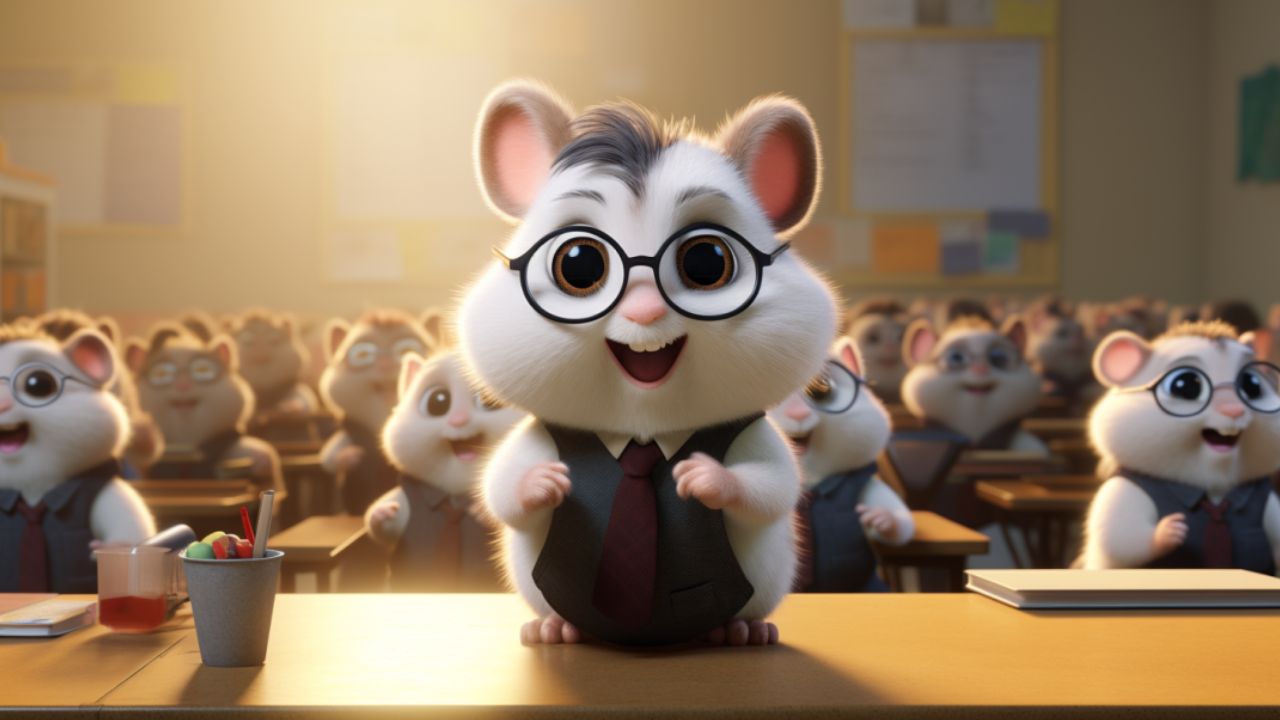
The world of the Winter White Russian Dwarf Hamster is filled with nuances, mysteries, and wonder. For both potential adopters and current hamster parents, several questions often arise regarding the care, behavior, and overall well-being of these tiny creatures. This FAQ section is dedicated to resolving those queries, shedding light on the essential aspects of the Winter White Russian Dwarf Hamster’s life, and offering guidance to ensure their optimal care and happiness.
Resolving the Most Frequently Asked Queries about the Winter White Russian Dwarf Hamster
- What is the average lifespan of a Winter White Russian Dwarf Hamster?
- Typically, the Winter White Russian Dwarf Hamster lives for around 1.5 to 2 years, although with optimal care, some can even reach 3 years.
- Are they nocturnal creatures?
- Yes, like most hamster species, the Winter White Russian Dwarf Hamster is primarily nocturnal. This means they are most active during the night and prefer resting during the day.
- How often should I clean their cage?
- A thorough cleaning is recommended once a week. However, spot cleaning, which involves removing soiled bedding and replacing it with fresh bedding, should be done daily.
- Can I house two Winter White Russian Dwarf Hamsters together?
- Yes, they are among the more sociable hamster species and can coexist peacefully, especially if introduced at a young age. However, it’s essential to monitor their interactions and separate them if signs of aggression appear.
- Why is my hamster changing color?
- The Winter White Russian Dwarf Hamster has a unique ability to change its coat color based on the season. During winter, their coat can turn almost entirely white, helping them camouflage in snowy environments. As the seasons change, so will their coat color.
Providing Clarity for Both Potential Adopters and Current Hamster Parents
- What type of food is best for my hamster?
- A balanced diet of commercial hamster pellets, fresh vegetables, and occasional protein sources like mealworms is ideal. Avoid feeding them citrus fruits, onions, chocolates, or any high-sugar or high-fat foods.
- How can I tell if my hamster is stressed or unwell?
- Signs include lethargy, loss of appetite, aggressive behavior, fur loss, or rapid weight changes. If you observe any of these signs, it’s essential to consult a veterinarian.
- Can my hamster get wet?
- It’s best to avoid letting your hamster get wet as their dense fur takes a long time to dry, which can lead to hypothermia. If they do get wet, gently pat them dry with a towel.
- How can I tame my Winter White Russian Dwarf Hamster?
- Start with short, daily interactions. Speak softly, offer treats, and be patient. Over time, with consistent gentle handling, your hamster will become more accustomed to your presence.
- Do they need toys or exercise equipment?
- Absolutely! Exercise wheels, tunnels, chew toys, and climbing structures can keep your hamster entertained and physically active. Ensure the toys are safe and free from small parts that could be ingested.
Navigating the world of hamster care can sometimes feel overwhelming, especially with the myriad of information available. This FAQ aims to act as a starting point, offering concise, reliable answers to the most pressing questions. As always, it’s essential to conduct further research and consult professionals when needed to ensure the best life for your furry companion.
Final Thoughts
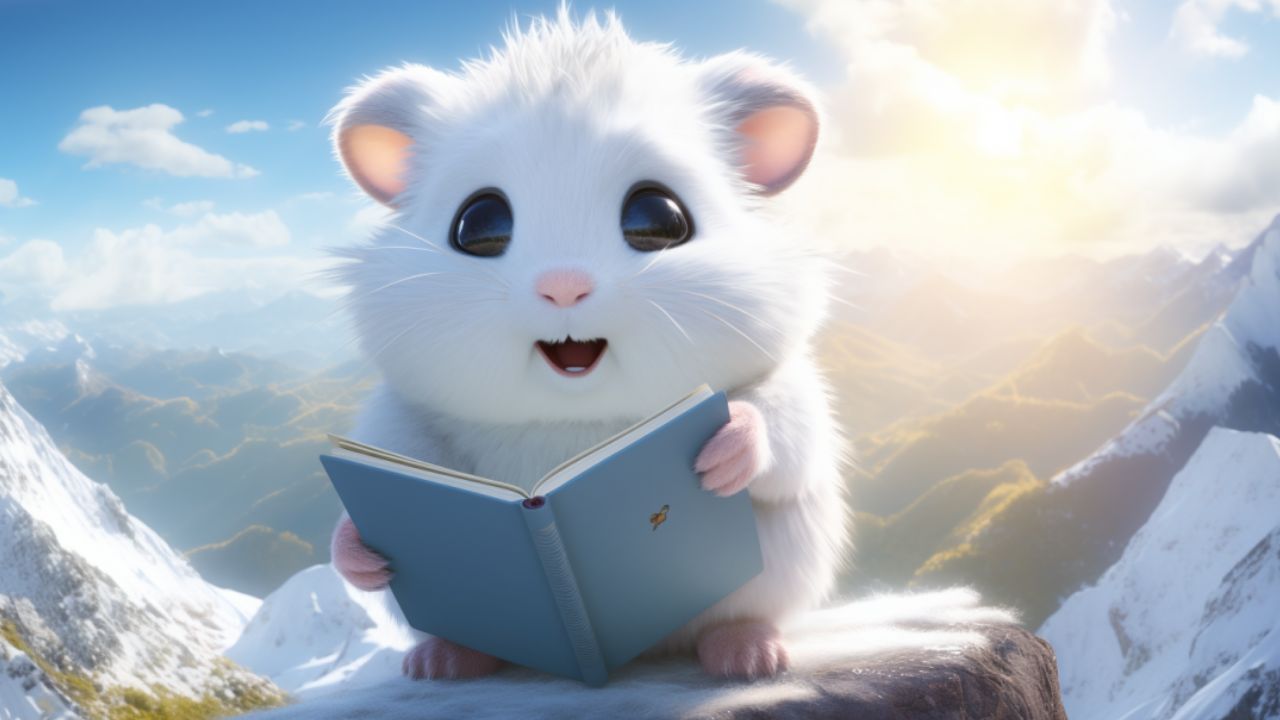
The journey through the life and nuances of the Winter White Russian Dwarf Hamster has been nothing short of enlightening. These tiny creatures, with their ever-changing coats and spirited personalities, truly capture the essence of nature’s marvel.
Wrapping up the Key Takeaways about the Winter White Russian Dwarf Hamster
From understanding their native habitats, characterized by chilly terrains and adaptations, to diving deep into their behavior, diet, and health needs, we’ve traversed the comprehensive spectrum of what it takes to care for such a unique species. Their physical attributes, changing with the seasons, offer a glimpse into nature’s adaptability, while their behavior underscores the importance of understanding and respecting the needs of every creature, no matter how small.
A Concluding Note Emphasizing Responsible Care, Adoption, and the Significance of Sharing this Knowledge
The onus of knowledge is not just to possess it but to share and act upon it. As potential or current caregivers for the Winter White Russian Dwarf Hamster, the responsibility is twofold. Firstly, to provide them with an environment that mirrors their natural habitat as closely as possible, catering to their dietary, health, and behavioral needs. And secondly, to champion the cause of responsible pet ownership, which includes ethical breeding practices, timely health check-ups, and spreading awareness about their unique requirements.
Furthermore, in the era of information overload, sifting through to find authentic and reliable insights can be daunting. Hence, sharing this comprehensive guide with fellow enthusiasts, potential adopters, or curious minds can go a long way in ensuring that these little hamsters receive the love, care, and respect they rightfully deserve.
Thank you for embarking on this enlightening odyssey with us, understanding the intricate world of the Winter White Russian Dwarf Hamster. May your journey with these delightful creatures be filled with joy, learning, and countless cherished moments.

